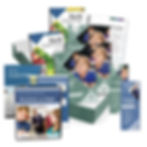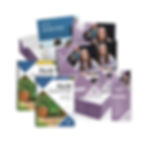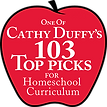Everything you could possibly need!

IEW's Core Methods
Our methods are designed to develop a student's organization skills (structure) and artistic flair (style).
Structure
With IEW's nine structural models, teachers teach step-by-step: note making and outlines, writing from notes, retelling narrative stories, summarizing a reference, writing from pictures, summarizing multiple references, inventive writing, formal essay models, and a formal critique.
Style
Using IEW's stylistic techniques such as strong verbs, quality adjectives, and sentence openers, students incrementally move from basic to a variety of sentence structures, improved vocabulary and more sophisticated writing.
Click the link below to read Cathy Duffy's Reviews
-
Teaching Writing: Structure and Style Writing Seminar - Click Here
-
Structure and Style for Students - Click Here
-
Bible-Based Writing Lessons in Structure and Style - Click Here
-
History-Based Writing Lessons In Structure and Style - Click Here
-
Wonders of Science Writing Lessons - Click Here
-
Primary Arts of Language: Reading & Writing - Click Here
-
The Elegant Essay - Click Here
-
Window to the World - Click Here
-
Linguistic Development through Poetry Memorization - Click Here
-
Fix It! Grammar Series - Click Here
-
The Phonetic Zoo - Click Here
It's a method that works.
IEW's methods provide a comprehensive, systematic, graduated approach for developing great writers. Your students will become fully capable of extracting their ideas, organizing their thoughts, and presenting their results clearly and competently.
A Method Delivered in Multiple Formats

The video instruction provides the most helpful formation by modeling our methods for the teacher.

Many choose to use videos in the first year to lay a foundation for their students while giving the instructor time to become familiar with the program.

Other teachers and parents find our theme-based writing lessons a perfect fit for their students.
What do video lessons look like?

Teachers or parents watch a short segment of the Teaching Writing: Structure and Style video course so they can be equipped to answer student questions.

Students watch their lesson, presented by Andrew Pudewa and complete the assignment.

Teachers or parents evaluate students' work using the easy-to-use checklist.

Repeat for twenty-four weeks!
IEW's methods for teaching writing are similar to methods one might use to teach music, art, or even sports.
Students begin by analyzing and imitating existing good writing. Then through a series of incremental steps, they develop the ability to write their own original compositions.
What do theme-based lessons look like?

Teachers or parents watch a short segment of the Teaching Writing: Structure and Style video course so they can be equipped to teach from theme-based books.

Using the lesson plans in the theme-based Teacher’s Manual, teachers or parents teach, and students complete the assignment.

Teachers or parents evaluate students’ work using the easy-to-use checklist.

Repeat for thirty weeks!
The Extra Benefit of Using Our Methods
IEW helps students develop thinking skills.
IEW’s methodology provides a blueprint that students can use to develop their critical thinking skills. As Andrew Pudewa, founder and director of IEW, would say, “You can’t get something out of a brain that isn’t in there to begin with. If you want to think of something, you have to ask yourself a question. Thinking and learning to think is integrally connected with learning to ask good questions.”
Why is IEW all you need to teach writing?

We provide step-by-step instructions for using our materials.

Because students will experience success, they will find they actually look forward to writing!

IEW works with students spanning a wide range of ages and aptitudes.

IEW methods have been proven to be effective for students of all ages and levels of ability , including those who are gifted, have special needs, or are English language learners.
Free Language Arts Lessons
Try three FREE weeks of language arts instruction!














